Fort to Fort Trail : Fort Erie to Niagara Falls
Fort to Fort Trail
Fort Erie Ontario
Prior to setting out on the Trans Canada Trail, we hiked across Ontario on the beautiful 850 km long Bruce Trail. Part of this hike included the route along the Niagara Parkway from Fort Erie through Niagara Falls to Fort George in the town of Niagara on the Lake. This stretch is known by a few names such as the Fort to Fort Trail, the Niagara Parkway Recreation Trail, and the Freedom Trail. Along the way it also joins with the Laura Secord Legacy Trail, Brock’s 1812 Route, the Bruce Trail and of course the 28,000km long TCT.
With time off the
Great Trail at the moment, and while planning our return to le Grand Sentier in 2021, we
thought we would take the opportunity to share our experiences on the wonderful section
of the Great Trail in the Niagara region.
As we set out one June weekend to trek this 100 km of trail it was notably very hot, and quite humid, and unfortunately, parts of the pathway afforded little shade. We had arrived in the community of Fort Erie courtesy of a friend who drove us and our gear to the trail’s Niagara terminus at the historical site of Fort Erie.
Given that we had set out on what was at times termed the ‘Fort to Fort Trail’ we felt that it was appropriate to begin with a tour of the fort itself. Old Fort Erie is a British Canadian fortification surrounded by earthworks situated on the strategically important mouth of the Niagara River on the shores of Lake Erie. The present historical site and pentagonal, or star-shaped structure, is the fourth iteration of the Fort at this location, which has been built, rebuilt, and destroyed over the course of its lifetime.
During our brief exploration of the grounds, we visited the barracks, guardrooms, and powder magazine, and saw a variety of historical artifacts on display. We also spent time at a stone memorial denoting a mass military grave dedicated to those who served and fell during the siege of the fort in 1814 by American invaders during the War of 1812.
Niagara Parkway Trail
Intrigued by the history of the region, we set out onto the pathway, which took us out of old Fort Erie, crossed over Lakeshore Rd, and joined up with the Niagara River Recreation Trail. This 57 km long paved route stretched from Fort Erie in the south, along the Niagara River and international border, to Niagara-on-the-Lake in the north, on the shores of Lake Ontario. As we remember it, this trail is primarily an accessible, level, paved pedestrian and cyclist pathway connecting the communities and attractions throughout the region.
As we set out on the paved pathway we traced the banks of the Niagara River, from which we could see American communities across the narrow waterway. We soon came to an imposing structure known as the Mather Arch set in the middle of a well-landscaped roundabout.
This monument, built in 1939, is dedicated to Alonzo Mather, the architect of the International Peace Bridge, which is situated nearby. It also serves as a symbol of cooperation between Canada and the United States, which share the world’s longest peaceful border. In the same area, a War Cenotaph dedicated to the memory of local veterans from World War I, World War II, and the Korean conflict also stands.
Continuing northward, our path took us under the metal spans of the Peace Bridge, which crosses the international border into the US. Shortly afterwards, we followed the sidewalks of Niagara Blvd, walking through the center of town past restaurants and local shops.
Here, as we passed store front after store front we were stunned to find historical plaques and parkettes wedged between buildings and the shoreline.
Black Canadian History
Here a plaque was dedicated to ‘The Crossing’ and detailed the ferry system which navigated the Niagara River from 1796 until 1950, crossing the international boundary between Buffalo New York and Fort Erie Ontario. Given its location, this area is one of the most important terminuses of the Underground Railroad. This secret system helped individuals and families escape from slavery, and southern slave owners in America, to get north and into Canada. Historians estimate that between 35,000 and 40,000 Black individuals escaped and assured their freedom in the Niagara Region. Here, local townspeople aided in the escape of slaves and their families throughout the nineteenth century.
Our route continued northward, and we again crossed under a bridge linking our two nations – this time a steal beamed structure for trains to cross between Canada and the United States.
The next site we came to on the edge of town was Bertie Hall, a beautiful red-brick mansion complete with huge white columns in the front. Here our attention was drawn to the metalwork symbol of a fleeing slave beside a historical plaque. Apparently, this building was a warehouse in the nineteenth century, which also served as a ‘safe house’ for escaped slaves. Despite the fact that former slaves had crossed the border into Canada, which did not allow for slavery at the time, American bounty hunters were known to search the region seeking to re-capture escapees.
Tracing along Niagara Blvd roadway we came to Bowen Road Park and found one of the iconic Trans Canada Trail Pavilions. Continuing on, the path remained on the shoulder of the local road, and while we were able to take refuge under some of the larger trees on the edge of people’s properties, we soon realized that our largest challenge was not going to be navigating the route (there was a single straight path), or finding the numerous historical sites we hoped to see, but instead it was going to be finding a way to stay cool on the long and nearly shadeless trek to Niagara Falls. Even though it was still early in the day, the heat of the season was blazing and was being reflected back at us by the paved walkway and pavement of the nearby roadways, making the venture all the more challenging.
Indeed, it was while seeking refuge from the sun under the trees on the shoreline of the Niagara River that we came across a pair of beautiful glowing white Great Egrets with their telltale yellow beaks and black legs! Here we found one of the majestic birds wading in the shallow water a few feet off the shore, while another sat in the tree above us!
The trail next took us over a bridge spanning Frenchmen’s Creek, a tributary of the Niagara River as well as taking us past the National Historical Site, the location of a failed invasion by American troops during the War of 1812. On the water’s edge, we also saw a flock or ‘gulp’ of Double-crested Cormorants in the trees!
Given the heat, we soon moved off the main trail and began to trek on the periodically treed green space paralleling the side of the road.
Sometime later, we arrived at Miller’s Bay and marina where we took the opportunity to sit at one of the picnic benches and read about ‘Little Africa’, a community of Black Canadians established in the region in the 1840s.
The unassuming plaque, mounted on a rock beside the trail, was placed as a reminder that many Canadian towns were established by Black Loyalists who had a significant influence upon the region. According to the ‘Freedom Trail’ pamphlet, many Black people who resided here made their living supplying lumber and wood to local railways and shipbuilders.
Venturing onward, we continued to follow the Niagara Parkway road and shoreline. In short order, we crossed over Black Creek and ventured past the Niagara Christian Collegiate and Riverside Community Church, as well as the quaint red brick structure of the Willoughby Historical Museum. Having circumnavigated the boundaries of the Legends on the Niagara Golf Course, given the meandering nature of the waterway and paralleling trail, we could now see the entertainment district of Niagara Falls in the hazy distance!
Nearby, across the narrow Niagara River, we could also see Navy Island National Historical Site. From 1761 to 1764 this tiny island was a British shipyard building the first British vessels to sail the upper Great Lakes. It was an essential outpost during the Pontiac uprising from 1763-1764, and briefly served as the declared seat of the Republic of Canada for William Lyon Mackenzie’s exiled government during the Rebellion of 1837.
In addition, following the Second World War, Navy Island, which is situated between two peaceful countries, was seriously considered as a viable location for the headquarters of the United Nations on a neutral territory. Today it is an uninhabited forested island and an archaeological site managed by Parks Canada.
About halfway around the Legends on the Niagara Golf Course, we came to Chippawa Battlefield National Historical Site, marked by the presence of a small stone obelisk and historical plaque in the middle of an open green space. On this site on July 5th, 1814, during the War of 1812 and as part of the American invasion of Upper Canada, US troops defeated the local British forces. The American forces who were victorious here would go on to fight in the Battle of Lundy’s Lane (now Niagara Falls) where they would eventually be beaten and withdraw to Fort Erie prior to the conclusion of the war in 1814.
Natural Wonders of Niagara
Reflecting on the rich and varied history in the region, and with our goal for the day in sight, we pushed on past the subdivisions on the outskirts of the town of Niagara Falls. Here the trail crossed over the Welland River on a narrow walkway, taking us into Kingsbridge Park, past the various local hydro facilities and vast parking lots, and into the Dufferin Islands Nature Area.
Here we took a few moments to rest in the incredible shade while enjoying the park benches! Never had sitting felt so good! We were amazed to find that within the Dufferin Islands Nature Area there is a wonderful network of pathways and some great bird-viewing possibilities!
Continuing down the trail we passed an imposing structure on the banks of the Niagara River. This sprawling complex with a classical façade is the former Toronto Power Generating Station, and it is now an abandoned hydroelectric plant spanning much of the nearby shoreline.
Niagara Falls
As the trail moved along the banks of the river way, we soon found ourselves being covered in a gentle mist which descended throughout the region. It was now very much clear that we had arrived at the iconic Niagara Falls, which is actually composed of a series of three waterfalls (Horseshoe Falls, American Falls, and Bridal Veil Falls) spanning the Canada-U.S. border and the Niagara River.
The Canadian Falls / Horseshoe Falls, spans between the Canadian shoreline at Table Rock and Goat Island on the American side, and is primarily in Canada according to the international border delineated in 1819 in the Treaty of Ghent. This impressive waterfall is estimated to be about 170 ft (52 m) tall and 2700 ft (820 m) wide. However, these numbers are gradually changing as the falls slowly move owing to erosion.
Local information at the Table Rock Information Centre estimated that about 90% of the Niagara River flows over Horseshoe Falls, the iconic waterfalls typically taken to be Niagara Falls, while the remaining 10% flows over the American and Bridal Veil Falls. While Niagara Falls is not the largest waterfall in the world, it is the biggest in terms of the sheer volume of water which flows over it – estimated to be an astounding 750,000 gallons each second.
We took our time enjoying the Horseshoe Falls from the vantage point of Table Rock. This site and the information center located here are named for the flat rock which was previously on this location and which jutted out into the water. This site is also important as it was privately owned until 1885 and included high fences and buildings which blocked the view of the falls to anyone who refused to pay for the privilege of seeing it. In response, the Niagara Parks Commission was established in 1888 as part of an international effort to preserve the natural scenery of the region, as well as to allow access for visitors to view the falls.
Having finally arrived at our destination for the day, we took the opportunity to cool off by taking a Journey Behind the Falls.
After walking the narrow, wet, walkways behind the thundering falls, we ventured down the paved pathway and walking promenade along the river gorge. This popular spot provides visitors with magnificent views of Niagara Falls and allows anyone to admire both the Canadian Horseshoe Falls and the American Bridal Veil Falls! From here you can also see the iconic Maid of the Mist boat tours down below, crowded with people as they venture near the base of the powerful Falls thundering overhead! In the past, we have ventured on one of these amazing tours.
Today, however, we simply enjoyed our time throughout this stretch, relaxing in the shade and partaking of an ice cream (or two) to celebrate the completion of our first day’s hike.
Departing from the Niagara Recreational Pathway and the Great Trail for the day, we wandered into town to eat and visit the Skylon Tower which would allow us to get a view of the region from above!
Exploring Niagara Falls
After a day on the trail, the bustle of the busy, vibrant, and noisy tourist district was a little overwhelming for two weary hikers. As an interesting aside, the scale of local development and tourism is nothing new to the region. In fact, the Niagara district, and of course the Falls themselves, are often cited as playing an important part in the development of America’s National Parks and Parks Canada. Even in the early to mid-nineteenth century, the area around Niagara Falls was viewed by travellers, European tourists, and travel publications as disastrously privatized and overly commercialized - to the point of undermining the natural beauty of the region. In this way, the Niagara region quickly became a symbol of tacky over-development and privatization from which support for public protected spaces and National Parks galvanized across the world. As a result, similar places of natural wonder were held in trust for public use and enjoyment for all time rather than as the property of the few. The goal of these public spaces and National Parks was to preserve the splendour of a site by preventing the same thing happening to areas of natural beauty and significance so that they continued to exist “for the benefit and enjoyment of the people” for all time.
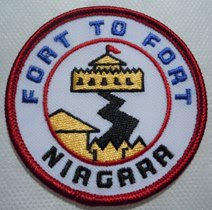
















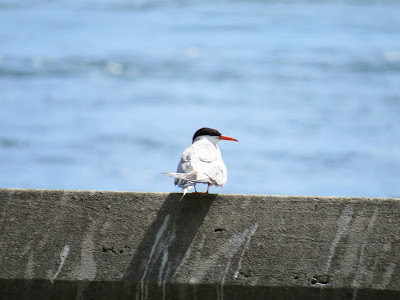





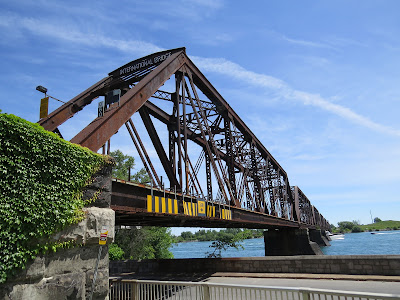












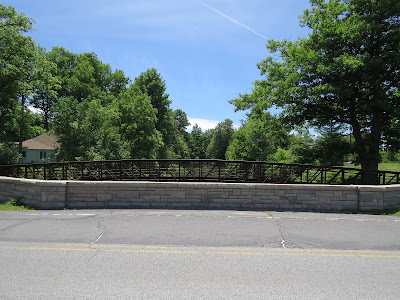






















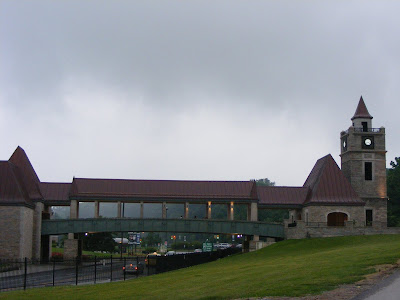










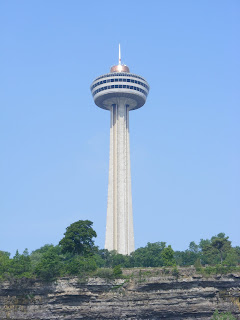






Comments
Post a Comment